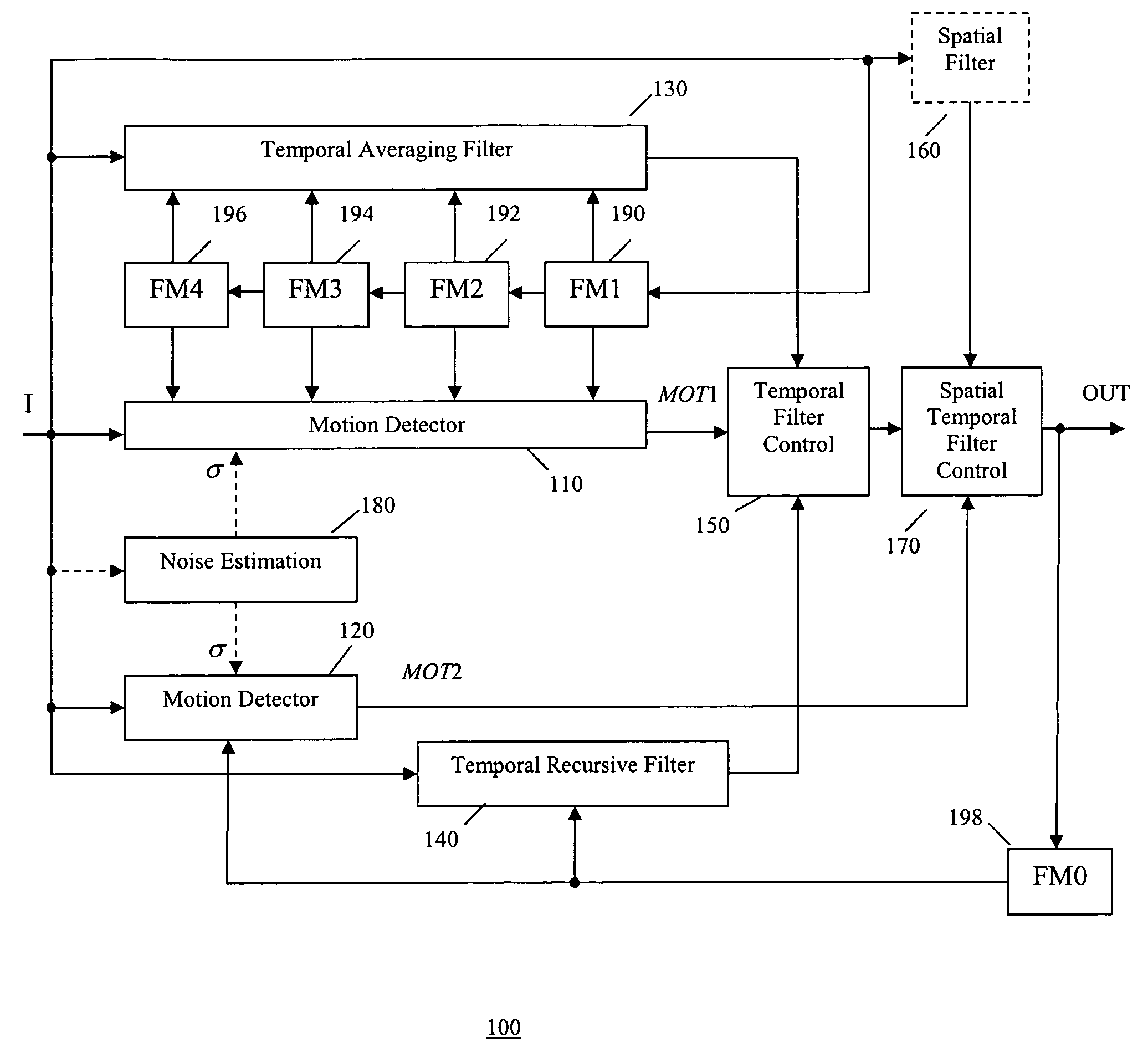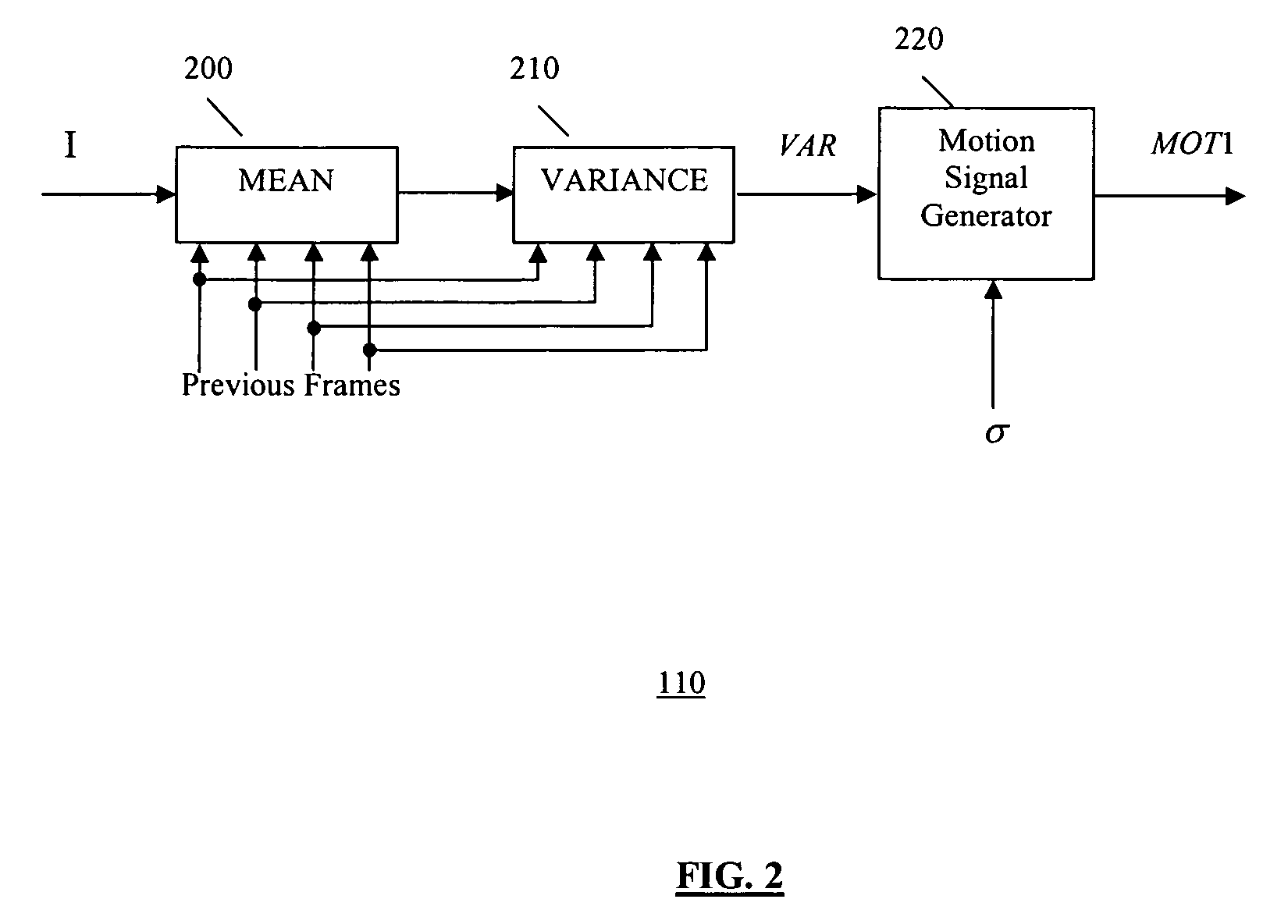Motion adaptive noise reduction apparatus and method for video signals
a video signal and noise reduction technology, applied in the field of video processing, can solve the problems of video signal corruption, video noise is a major source of picture quality degradation, video noise is more annoying to viewers, etc., and achieve the effect of large noisy areas and optimal noise reduction
- Summary
- Abstract
- Description
- Claims
- Application Information
AI Technical Summary
Benefits of technology
Problems solved by technology
Method used
Image
Examples
Embodiment Construction
[0017]In one embodiment the present invention provides a motion adaptive video noise reduction system including a first motion detector, a second motion detector, a temporal averaging filter, a temporal recursive filter, an optional spatial filter, and two control units. The first motion detector detects content motion among current frame and multiple consecutive previous frames. The second motion detector detects content motion between the current frame and the processed preceding frame. Both motion detectors use global noise statistics, which can be calculated using a separate noise estimation unit. The temporal averaging filter uses multiple-frame averaging of current frame and previous frames. The temporal recursive filter takes two-frame averaging of current frame and processed preceding frame.
[0018]The first control unit controls the switching between the multi-frame temporal averaging filter and the two-frame temporal recursive filter based on the motion signal generated by t...
PUM
 Login to View More
Login to View More Abstract
Description
Claims
Application Information
 Login to View More
Login to View More - R&D
- Intellectual Property
- Life Sciences
- Materials
- Tech Scout
- Unparalleled Data Quality
- Higher Quality Content
- 60% Fewer Hallucinations
Browse by: Latest US Patents, China's latest patents, Technical Efficacy Thesaurus, Application Domain, Technology Topic, Popular Technical Reports.
© 2025 PatSnap. All rights reserved.Legal|Privacy policy|Modern Slavery Act Transparency Statement|Sitemap|About US| Contact US: help@patsnap.com



